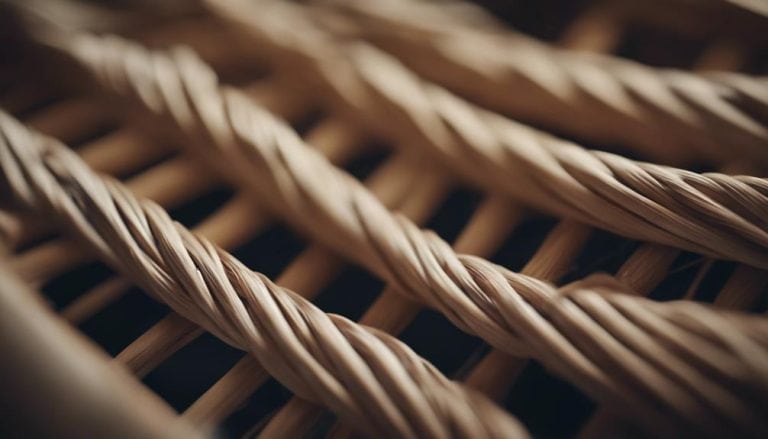Rattan Cane Danish Cord Weaving Methods
The meticulous process unfolds as I slowly weave through the intricate patterns of rattan cane Danish cord. Each strand intertwines with precision and care, creating a harmonious blend of tradition and craftsmanship.
The art of Danish cord weaving holds a wealth of knowledge waiting to be explored, offering insights into a world where technique meets artistry. Join me as we unravel the secrets behind this timeless craft, discovering the intricate methods that have stood the test of time.
Rattan cane and Danish cord are commonly used in furniture weaving. There are various methods for weaving with these materials, each with its own unique characteristics and applications.
Key Takeaways
- Evolution of techniques blending tradition with modern styles
- Use of essential materials and tools for intricate weaving
- Exploration of advanced patterns for creative expressions
- Finishing touches and maintenance for durable, sustainable results
History of Rattan Cane Weaving
The history of rattan cane weaving traces back to ancient times in Southeast Asia, where artisans first harnessed the plant’s remarkable flexibility and strength for creating intricate furniture pieces. This craft holds profound cultural significance, reflecting the rich heritage and traditions of the region.
Over the centuries, rattan cane weaving has evolved, with artisans developing innovative techniques to weave intricate patterns and designs. These evolutionary techniques have enhanced the durability and quality of rattan furniture and expanded its aesthetic possibilities, blending traditional artistry with contemporary styles.
The art of Danish cord weaving, a popular method utilizing rattan cane for chair seats, exemplifies this blend of tradition and modernity. The history of rattan cane weaving not only showcases the resilience and versatility of this material but also highlights its enduring presence in furniture craftsmanship, making it a timeless art form that continues to captivate with its beauty and functionality.
Materials Needed for Weaving
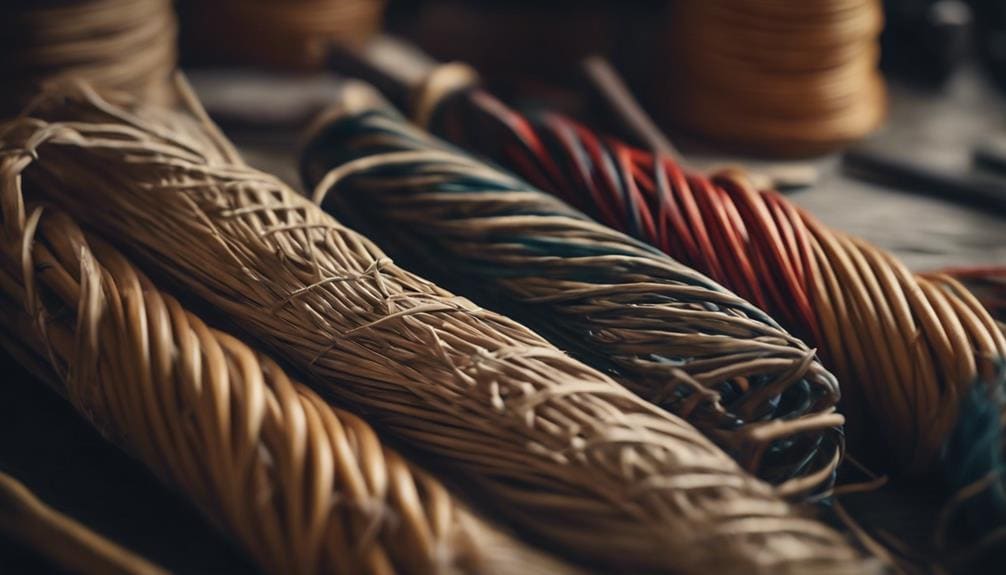
When preparing for rattan cane Danish cord weaving, one must gather essential materials such as a Danish cord, a chair frame, nails, a razor knife, a hammer, and a clamp. Danish cord, available in various diameters, is commonly crafted from paper or synthetic materials, catering to different weaving styles. A sturdy chair frame is crucial in supporting the woven Danish cord, ensuring longevity and stability in the final product.
Nails are indispensable for securing the cord to the chair frame at specific intervals, acting as anchor points for weaving. Weaving tools like a razor knife, hammer, and clamp are vital companions throughout the weaving journey, enabling precise cutting, secure fastening, and maintenance of proper tension while working with the Danish cord.
Understanding the nuances of different cord types and mastering weaving tools are fundamental steps toward creating beautifully woven rattan cane Danish cord masterpieces.
Basic Weaving Techniques
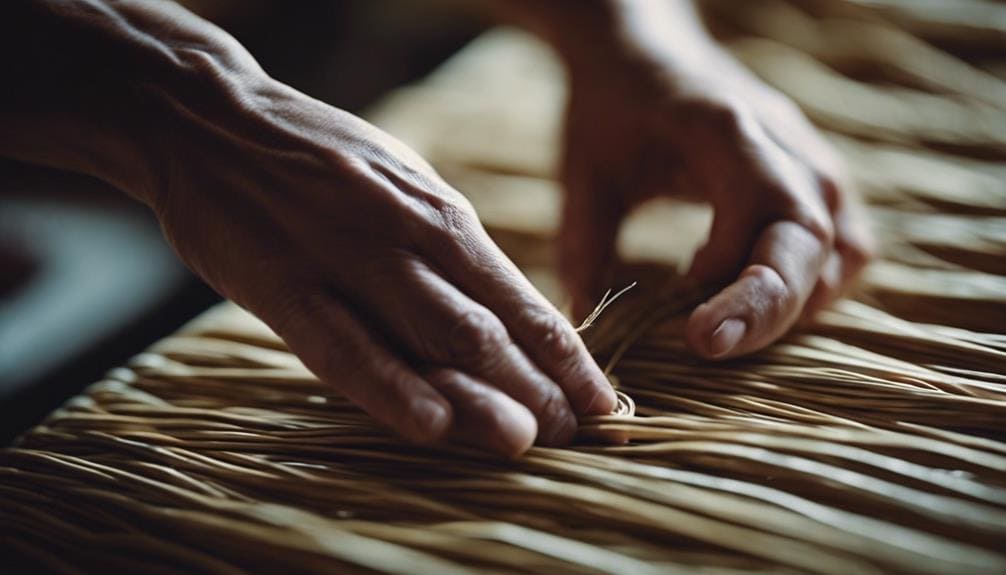
With precision and finesse, we carefully intertwine strands of Danish cord through the chair frame’s nails to form the foundation of our weaving masterpiece. This basic weaving technique is crucial for creating a sturdy and visually appealing seat.
As I guide the cord through each nail, I pay close attention to tension control, ensuring that every weave is secure and consistent throughout the process. Here are some key points to keep in mind:
- Tension Control: Adjusting the cord’s tension is essential to maintain the strength and durability of the woven seat. Proper tension control prevents sagging and ensures a comfortable seating experience.
- Weaving Tools: Utilizing the right weaving tools, such as needles and clamps, can significantly aid the weaving process, making it more efficient and precise.
- Color Options: Explore various color options to complement the chair frame and suit your aesthetic preferences.
- Weaving Styles: Experiment with different weaving styles to achieve unique patterns and textures that enhance the overall look of the seat.
Advanced Weaving Patterns
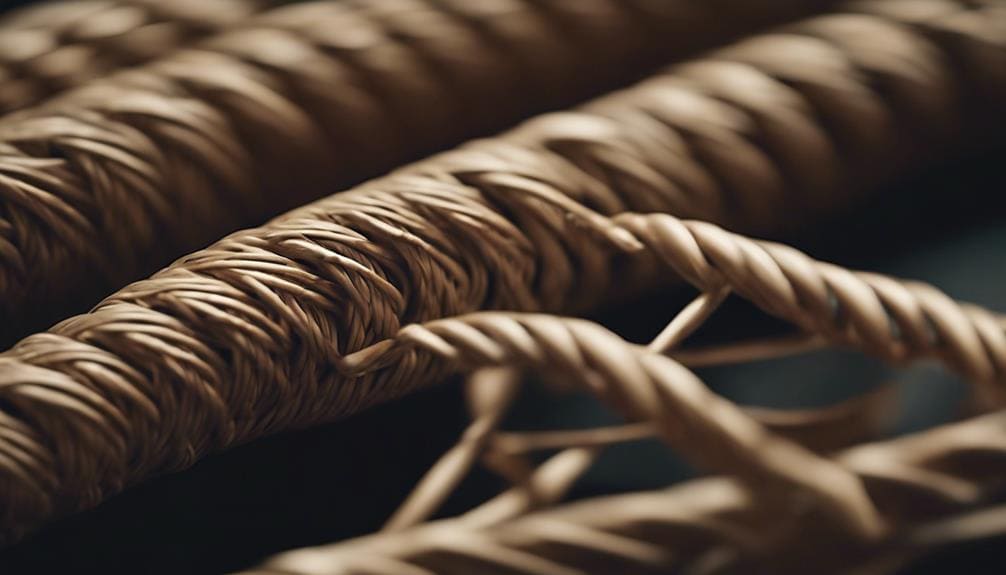
Navigating through advanced weaving patterns in Danish cord craftsmanship unveils a tapestry of intricate designs that demand meticulous attention to detail and a profound grasp of weaving techniques. In this advanced stage, weavers delve into creative combinations of patterns like herringbone, checkerboard, or diamond weaves, pushing the boundaries of traditional designs.
The allure of these patterns lies in their ability to transform a simple chair seat into a work of art, each stitch telling a story of skill and creativity.
Finishing Touches and Maintenance
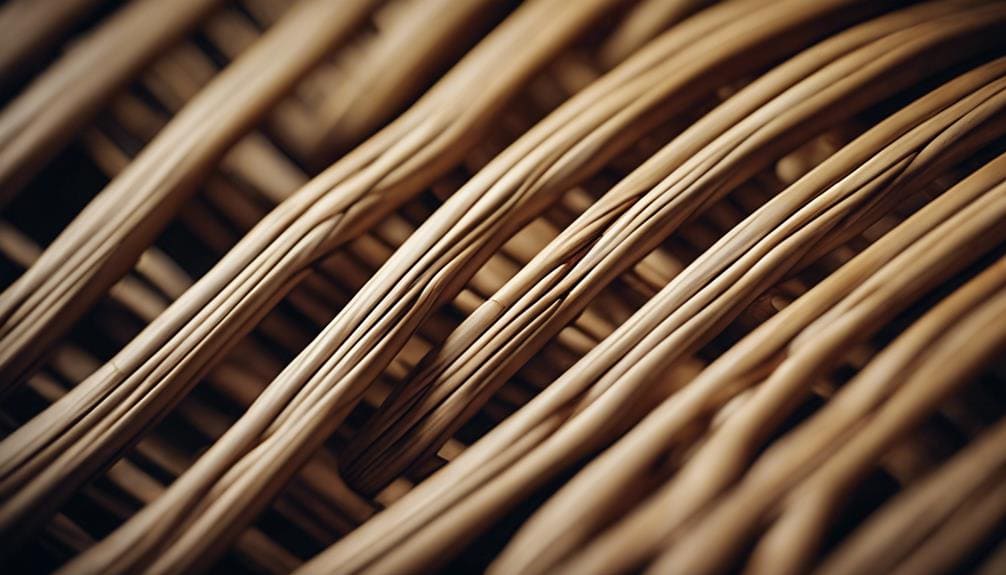
To ensure the longevity and aesthetic appeal of your Danish cord-weaving masterpiece, it is essential to meticulously attend to the finishing touches and maintenance tasks outlined in the following guidelines.
- Apply a coat of Danish cord oil: Conditioning the woven surface enhances its look and protects it from wear and tear, extending its lifespan.
- Smooth out imperfections: Fine-grit sandpaper allows you to refine the surface, ensuring a comfortable and flawless finish.
- Regularly inspect and tighten loose strands: Maintaining a sturdy weave requires periodic checks and adjustments to keep the structure intact.
- Protect from direct sunlight: Shielding the re-woven seat from sunlight prevents fading and drying out, preserving its original beauty for longer periods.
In the weaving community, sharing experiences and innovative solutions for challenges is vital for growth and improvement. By following these maintenance tips, you can uphold the integrity of your Danish cord piece and contribute to the collective knowledge of weaving enthusiasts.
Benefits of Rattan Cane Weaving
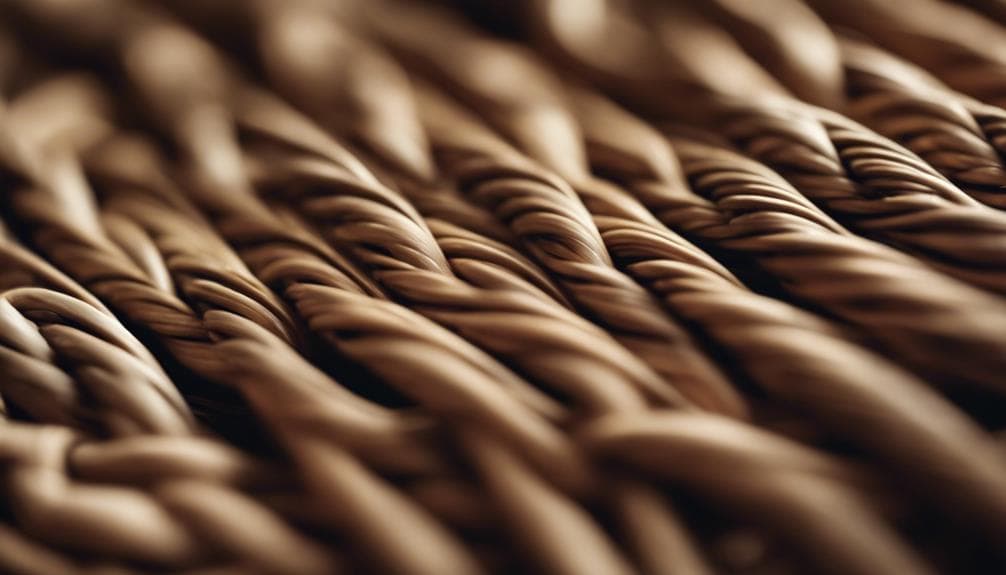
Rattan cane weaving stands out for its exceptional durability and strength, making it a preferred choice for furniture subjected to frequent use. The robust nature of rattan cane ensures that woven pieces retain their integrity over time, withstanding everyday wear and tear effortlessly.
Beyond its durability, the natural flexibility of rattan cane allows for intricate weaving patterns that contribute to the furniture’s strength and enhance its aesthetics. The sustainable aspect of rattan cane weaving adds another layer of appeal, as this eco-friendly material is harvested from renewable sources without causing harm to the environment.
Additionally, the excellent ventilation provided by rattan cane weaving makes sitting on such furniture a comfortable experience, even for extended periods, without feeling hot or sticky. The lightweight nature of rattan cane further complements its benefits, enabling easy movement and transportation of furniture items without compromising durability.
Tips for Successful Weaving
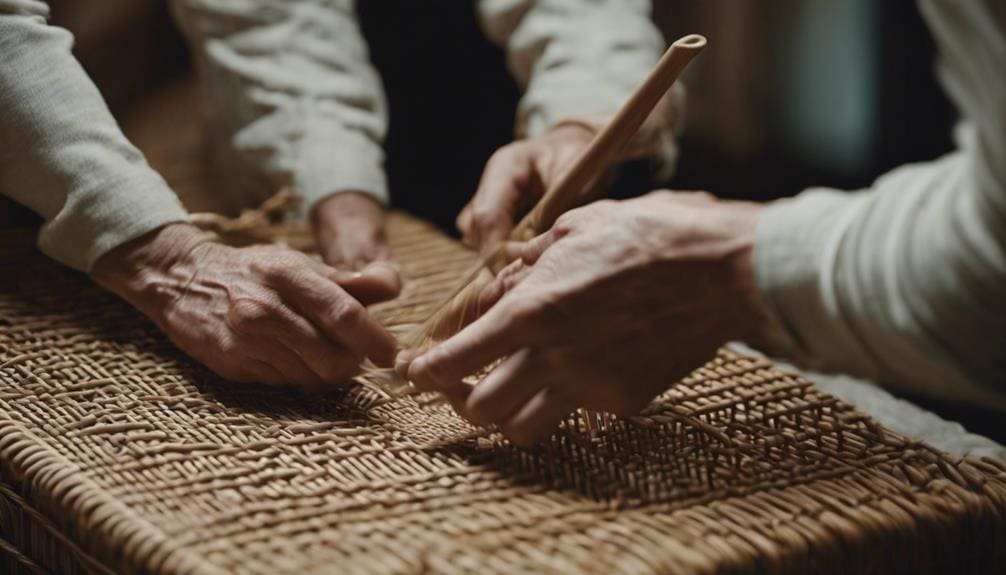
Maintaining consistent tension throughout the process is crucial for successful weaving to ensure a uniform appearance and a sturdy final structure. Here are some tips based on my experience:
- Adjust Weaving Tension: Be mindful of the tension you apply while weaving to achieve a consistent look. Too loose, the weave may appear sloppy; too tight, and the material could break. Practice finding the right balance.
- Explore Creative Designs: Don’t be afraid to experiment with different weaving techniques and patterns. Mixing things up can create unique designs that add a personalized touch to your project.
- Secure Strand Ends: Properly secure the beginning and end of each strand to prevent unraveling. This attention to detail not only maintains the neatness of your work but also ensures durability.
- Prioritize Ergonomics: Sit comfortably, maintain good posture, and take breaks to prevent strain during long weaving sessions. Ergonomics play a significant role in ensuring your weaving comfort and overall well-being.
Frequently Asked Questions
What Are the Different Types of Danish Cord Weaving?
When weaving Danish cords, the types vary, like a checkerboard, herringbone, and twill weaves. They offer color variations and innovative designs. These techniques have historical origins yet find modern applications, allowing for creativity and unique textures in projects.
How Is Danish Cord Made?
Crafting Danish cord involves twisting paper-based cordage into a strong, durable material perfect for weaving. Its history dates back to traditional Scandinavian furniture design, showcasing the artistry of manufacturing techniques and materials that have stood the test of time.
What Are the Different Cane Weave Patterns?
I’ve mastered the art of weaving with various patterns. Each technique adds character and strength to the final piece, from the elegant diagonal weave creating a chevron pattern to the sturdy basket weave forming a herringbone design.
How Do You Weave Danish Cord Without Nails?
When weaving Danish cord without nails, I prioritize cord tension and master the weaving technique. A secure and beautiful weave is achieved using traditional methods and exploring material alternatives without compromising authenticity.
Conclusion
As I carefully weave each strand of cord through the intricate patterns of rattan cane, I am reminded of the interconnectedness of life. Just as each thread plays a vital role in creating a sturdy and beautiful seat, every action we take has a ripple effect on the world around us. We can craft furniture and a legacy of quality and craftsmanship by approaching each task with patience, precision, and respect for the materials.


